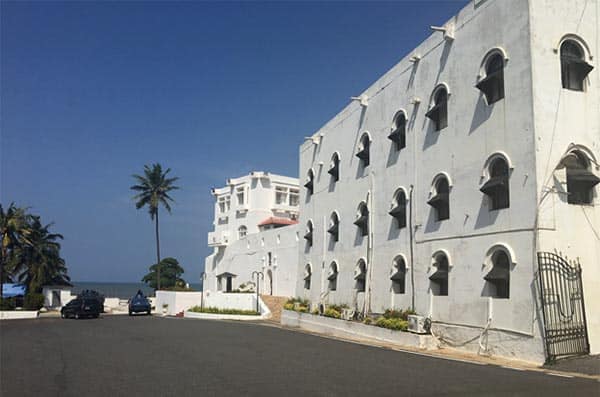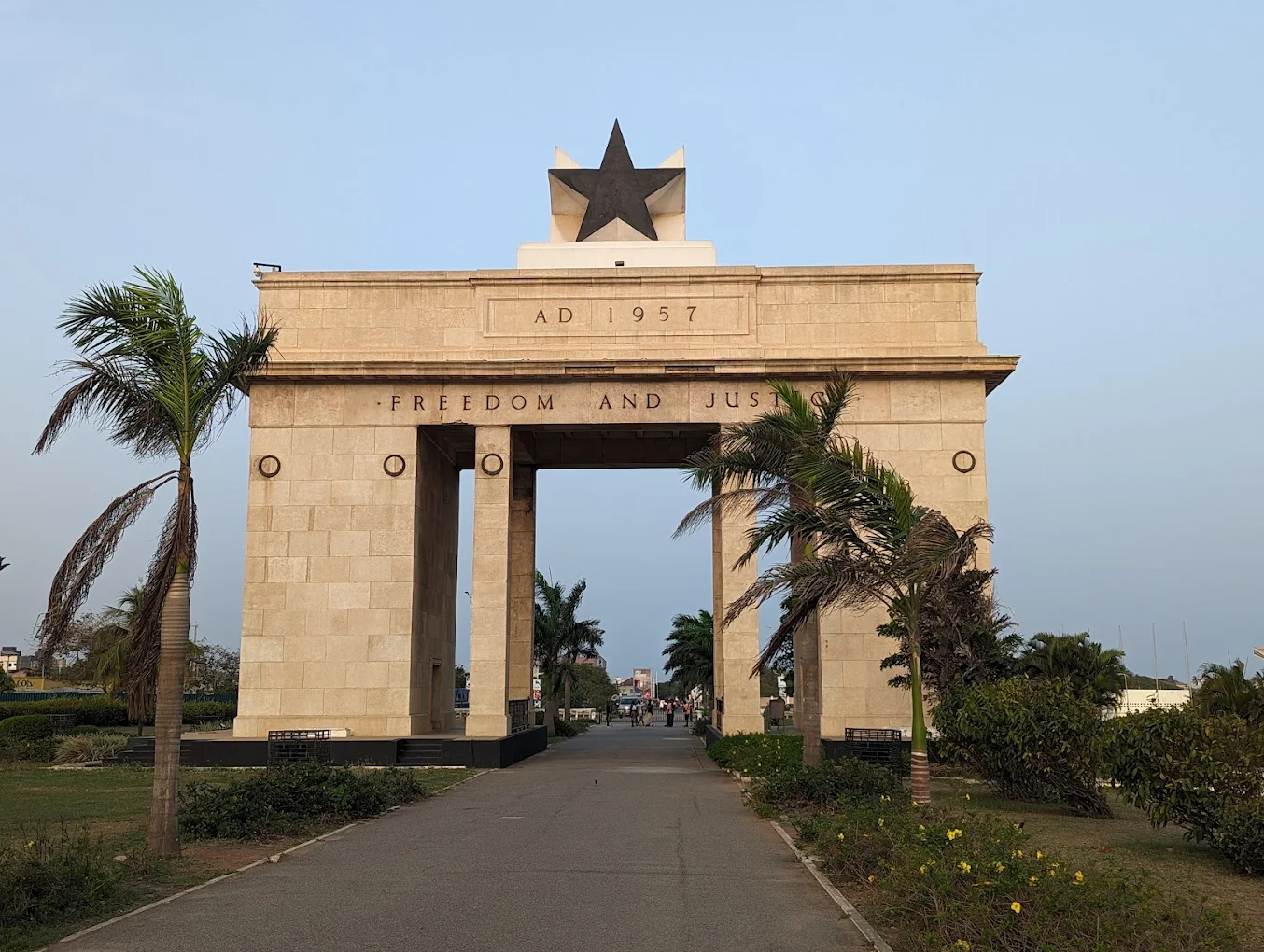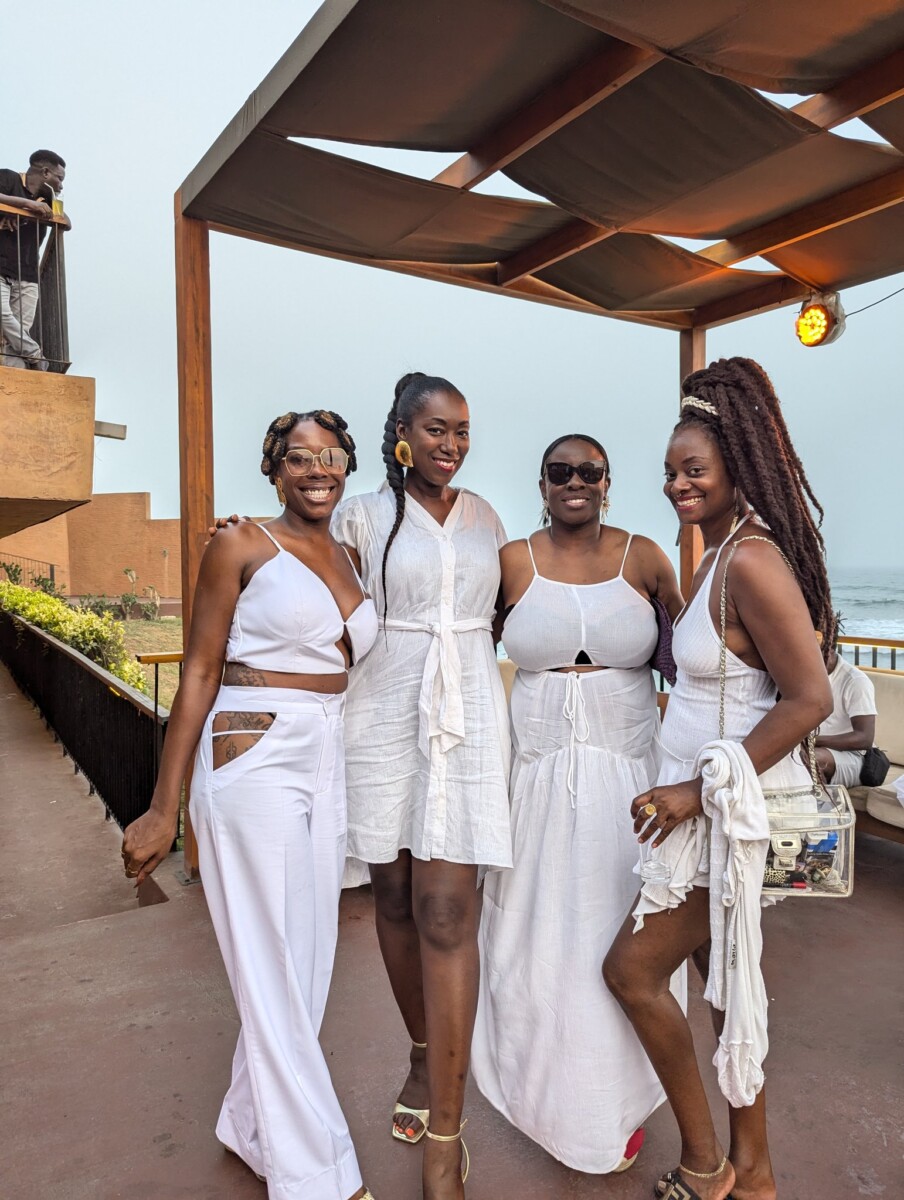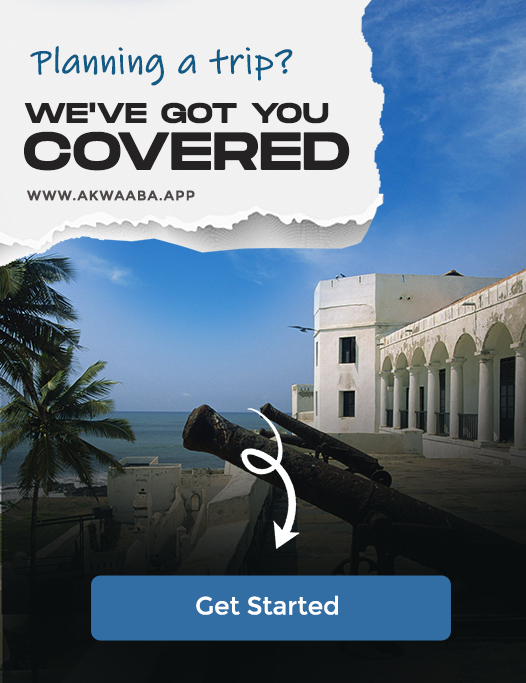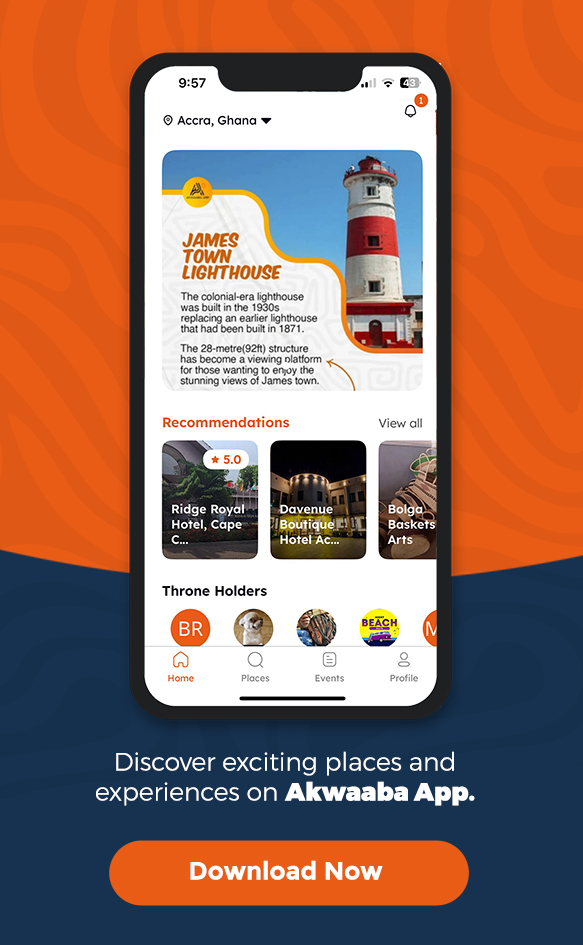As part of Ghana’s capital Accra, the Christiansborg Castle is a historic castle located on the shores of Osu, a vibrant township on the Atlantic Ocean’s Gulf of Guinea coast. In addition, Christiansborg Castle is unique among castles and forts in that it was, for most of its history, the seat of Ghana’s government until the Jubilee House was built in 1959.
However, what makes Christiansborg Castle so significant? A story of struggle, triumph, and transformation, it tells Ghana’s story. A historical landmark, it draws visitors who want to learn more about Ghana’s rich history. Get the Akwaaba app to explore Christiansborg Castle. It’s your go-to travel companion in Ghana, whether you need directions, historical facts, or nearby attractions.
The History of Christiansborg Castle
Who Built Christiansborg Castle?
Christianborg Castle was constructed in 1661 by the Danish West India Company. Danes viewed the Gold Coast (modern-day Ghana) as a prime location for trade, especially gold, ivory, and enslaved people. Their presence in West Africa was strengthened by the establishment of the castle as a trading post.
During a mutiny in 1679, the fort’s Danish commander was assassinated. The fort was later sold to the former Portuguese governor of Sao Tome by the new leader, a Greek named Bolten. After four years of occupation, the Portuguese resold the fort to the Danes in 1683 due to a lack of trade success. The castle has been owned by a variety of people over the years. It has been controlled by the Portuguese, British, and even the Swedes at various times in history. In 1877, the British turned it into a seat of government, a role it held until 1957 when Ghana became independent.
Christiansborg Castle and the Slave Trade
Christiansborg Castle in Ghana played a dark role in the Atlantic slave trade, like many forts along the Ghanaian coast. Many African men, women, and children were imprisoned there before being sent to the Americas. This painful past is haunted by the cramped, inhumane conditions inside the castle. The location of the city by the Atlantic Ocean made it an ideal location for trading. By doing so, the James Lighthouse was able to identify ships that arrived at the coast and regulate them. The goods and slaves were stored and transported to the arriving ships. The slaves were kept in dungeons at the ends of the castle, and transported to the ships through the DOOR OF NO RETURN.
As visitors walk through these dungeons, they can imagine the stories of those who lived—and suffered—in these walls in the past. It is a necessary but emotional experience to visit this dark chapter of history through guided tours. These tours provide deep insights into this dark chapter of history.
Christiansborg Castle in Ghana’s Modern History
In 1957, Ghana gained independence, and the Osu castle remained a key government building. The government moved to Jubilee House (now Flagstaff House) in 2013 when it was no longer the official residence of Ghanaian presidents.
The castle has been transformed into a tourist attraction and museum, preserving its historical significance while educating visitors.
The Architecture of Christiansborg Castle
A Fusion of European and African Designs
The architecture of Christiansborg Castle combines Danish, British, and African influences. Despite its sturdy stone walls, watchtowers, and large courtyards, the structure integrates subtle local touches seamlessly. A breathtaking view of the Gulf of Guinea can be seen from the castle, which is built facing the ocean. The strategic location was chosen not only for its beauty, but also for its defensive capabilities. In the past, the walls were lined with cannons, ready to repel enemy ships.
As Christiansborg Castle has evolved over the years, its architectural design reflects European styles from the time of its construction. In subsequent renovations, neoclassical architecture was introduced into the original structure. Among its key features are:
- Grand entrance gate.
- The impressive clock tower.
- Beautifully adorned halls and chambers.
Castle Gardens and Inner Courtyards
The castle gardens are one of Christiansborg Castle’s hidden gems. The harsh history of the site is starkly contrasted by the peaceful green spaces hidden behind the thick stone walls. The architectural style of the castle complex changes to accommodate administrative functions. The central courtyard connects various buildings built during different periods. Each of the Portuguese, Danes, and British added their wings and modifications, creating an architectural blend unique to West Africa.
Additionally, visitors can explore the inner courtyards where government officials and colonial rulers once strolled. The architecture here tells its own story; every archway, staircase, and corridor has witnessed centuries of change.
Cultural Significance of Christiansborg Castle to Modern Ghanaians
Christiansborg Castle holds both a painful colonial past and a proud independence in Ghana’s national identity. Ghanaians see the castle as a powerful reminder of how far the nation has come from colonized territory to independence as the first sub-Saharan African nation.
The castle plays an important role in teaching Ghana’s history to young generations. The site is regularly visited by school groups as part of their curriculum, which focuses on both the difficult aspects of colonial rule and the inspiring story of Ghana’s path to independence. A lot of Ghanaian families visit Osu Castle specifically so their children can connect with their national heritage.
What to Expect During a Visit?
Taking a tour of Christiansborg Castle in Accra is like stepping back in time. Walking through its rooms and dungeons, you’ll see:
- Governing chambers where major decisions were made.
- An underground dungeon once used to house enslaved Africans.
- Cannon-lined walls overlooking the ocean.
- Displays of historical artefacts highlighting Ghana’s colonial past.
The castle operates a two-tier admission system. Visitors from outside Ghana pay a slightly higher rate than Ghanaians. It helps support the castle’s maintenance while keeping it accessible to locals. School groups can also receive discounts with valid identification, making it an affordable educational destination.
How to Get There?
It is fairly easy to reach the castle from most parts of Accra. You can reach the castle by taxi, ride-sharing service, or public transportation from the Osu district, a 3-kilometre drive from the city center. You can park near the entrance if you’re driving yourself. During peak tourist season, arriving early helps secure a spot.
The Akwaaba app’s “Navigation” feature transforms your visit. You can download an offline map of the castle grounds before you arrive, complete with suggested routes based on your interests. Furthermore, the app provides real-time information on tour availability, special exhibitions, and even estimated crowd levels to help you plan your visit.
Best Times to Visit Christiansborg Castle
For the best experience at Christiansborg Castle, planning ahead is essential. Visitors can visit the castle Tuesday through Sunday from 9:00 AM to 4:30 PM, with guided tours departing regularly throughout the day. This historic building is closed on Mondays so that maintenance and preservation work can be done. Morning hours between 9:00 AM and 11:00 AM are typically the most pleasant. It’s a perfect time to take photos of the castle’s white exterior because the temperatures remain cool and the light is clear in the morning.
Visitors’ experiences are also affected by seasonal factors. It is best to explore the castle grounds during the dry season, from November to March. These months have low humidity and almost no rain interruptions. During the rainy season, particularly May and June, occasional downpours can limit outdoor exploration, though the castle’s interior is accessible all year long.
Photography Tips for Christiansborg Osu Castle
Photographers will find countless compelling subjects at the castle.
- Warm light bathes the white walls just before sunset, creating dramatic shadows and highlighting architectural details. The courtyard’s archways and doorways make for natural compositions that showcase the castle’s history and depth.
- Consider both the technical and ethical aspects of your photography when taking pictures inside the Osu castle.
- For proper exposure, you might need to adjust your camera settings in interior spaces because of the lower light levels.
- You should approach photographing sensitive areas like the former slave dungeons with appropriate respect and consideration.
- The stories told in these spaces are difficult, but essential, and deserve to be documented thoughtfully.
Nearby Attractions:
Christiansborg Castle is surrounded by the lively Osu neighbourhood, which offers several complementary attractions worth exploring after your tour.
Oxford Street
Oxford Street (officially Cantonments Road) is Accra’s famous shopping and entertainment district, just a short walk from the castle gates. In this bustling area, you’ll find everything from traditional markets to modern boutiques selling authentic Ghanaian crafts, fashion, and souvenirs. There is a diverse culinary scene in Osu that food lovers should not miss. Some of Accra’s best restaurants are found in the neighbourhood, from upscale restaurants serving international cuisine to local eateries serving authentic Ghanaian cuisine.
Independence Square
A short drive away is Black Star Square (Independence Square), one of Ghana’s most iconic sites. Ghana was liberated from colonial rule by the Independence Arch and the Black Star Monument. It hosts national celebrations as well as military events.
W.E.B. DuBois Centre
For those interested in more historical context, the nearby W.E.B. DuBois Centre is a great companion visit. The memorial and research center is dedicated to the late African American scholar who made Ghana his home in his later years. Its exhibits connect the African diaspora experience with Ghana’s independence movement, providing valuable context for what you’ve learned at the castle.
Osu Beach
Just beyond the castle grounds, Osu Beach is easily accessible for beach lovers. The beach is not primarily a swimming beach, but it offers beautiful views and offers the opportunity to see local fishing activities. There are also occasional cultural performances and festivals that showcase Ghana’s rich musical heritage along the beachfront.
The Akwaaba app’s feature maps these nearby attractions and suggests walking routes based on your interests. Whether you want to explore shopping, dining, historical sites, or cultural experiences, the app suggests customized itineraries that maximize your time.
Let the Akwaaba App Enhance Your Christiansborg Castle Experience
When you visit Christiansborg Castle, having the Akwaaba app on your phone makes the experience even better. Akwaaba is more than a travel app; it’s your guide to discovering Ghana. It helps in the following ways:
- Navigation Made Easy: Follow real-time directions to the castle.
- Historical Insights: Discover important events and people related to the site.
- Tourist Recommendations: Discover the best local restaurants, shops, and attractions.
- Cultural Tips: Make sure you understand local customs and traditions before you travel.
Final Thoughts:
There is more to Christiansborg Castle than just history—it is a symbol of Ghana’s culture, resilience, and evolution. There are stories everywhere in the castle, from its dark past as a slave trading center to its role in Ghana’s governance.
This site offers an unforgettable experience for history buffs, students, and tourists alike. Akwaaba makes planning your visit easy. Christiansborg Castle should be on your must-see list if you’re in Accra. This castle represents a journey through history, not just a castle.
